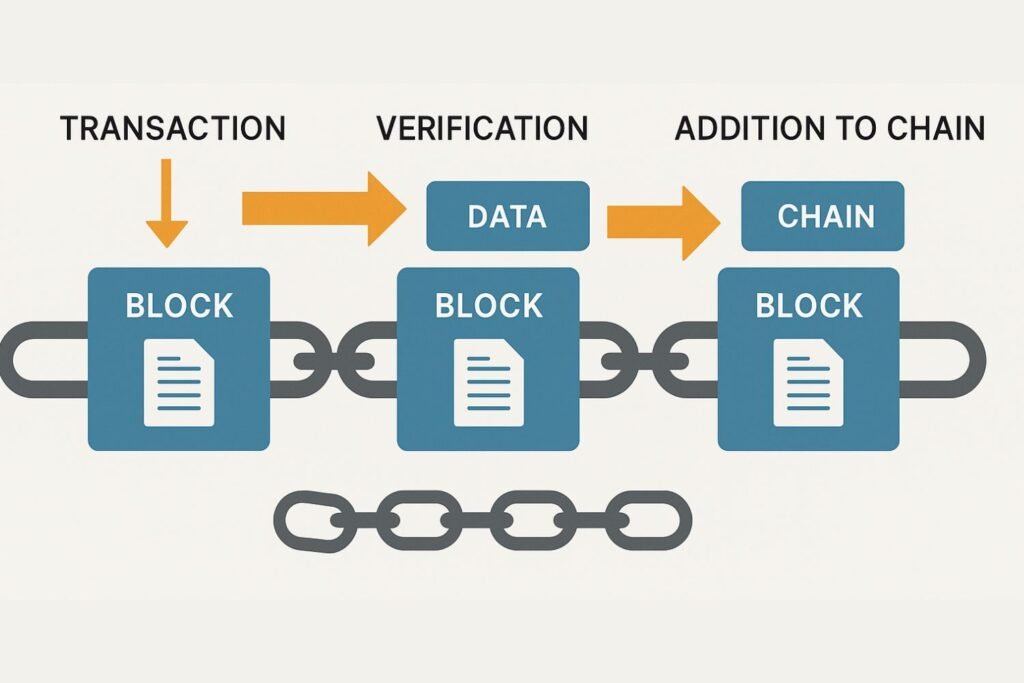⚠︎ Disclaimer: Cryptocurrency is a high-risk asset class. This content is for informational purposes only and does not constitute financial or investment advice. You may lose all of your capital. KoinGuide may earn a commission if you visit or sign up with a recommended provider via our affiliate links—at no additional cost to you. All recommendations are based on our independent reviews and evaluation process.
How Blockchain Technology Works

Blockchain technology explained simply with real-world analogies anyone can understand
Imagine you and your friends keep track of who owes money to whom in a shared notebook. But instead of one notebook that could be lost or tampered with, everyone has an identical copy.
Here’s How It Works:
- When someone wants to record a new transaction, they announce it to everyone
- Everyone checks if the transaction is valid (does the person have enough money?)
- If the majority agrees it’s valid, everyone writes it in their notebook
- Once written, it can never be erased or changed
That notebook is the blockchain, and each page is a "block" of transactions linked together in a chain. Brilliant, right?


